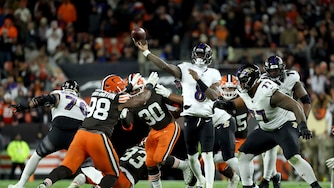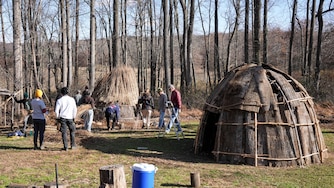On the day of the Orioles’ home opener in March, batting practice was the hitters’ first opportunity to test the dimensions of the new, closer left-field wall. Ryan Mountcastle’s first swing that afternoon was a low line drive that cleared the 363-foot marker and felt like a sign of things to come.
The benefit to Mountcastle’s power production that everyone expected all winter hasn’t materialized. The Orioles first baseman is instead in one of the worst spells of his career, entering Wednesday with just two home runs and a .606 OPS. He’s been through this before, in 2021, when he had a .614 OPS going into Memorial Day and still ended the year well.
“I’m just trying to figure it out and take it one day at a time and stay positive,” Mountcastle said.
In a lot of ways, Mountcastle is the same hitter as he has been. He is who he is from a swing-decision standpoint, which feels exacerbated during cold stretches like this, but he’s still hitting the ball hard and striking out around his historical ranges. This version of Mountcastle has been productive before.
In terms of his profile, it’s more similar to 2021 than anything since, though. That season, the last before the wall was moved back, Mountcastle set an Orioles rookie record for home runs in part because of his effectiveness at hitting the ball hard in the air to his pull side. He had all-fields power but still hit 19 of his 33 home runs that year to the left of dead center, with 20.5% of his batted balls pulled in the air — the highest rate of his career.
When the wall moved back, that rate dipped drastically as time went on. He pulled the ball in the air 15.4% of the time in 2022, 12.4% of the time in 2023 and 10.1% of the time in 2024. Although there was some increase in elevated contact the other way, it mostly resulted in more balls on the ground and a lower overall pull rate.
Read More
Mountcastle has been pretty open about how the lack of a reward for pulling the ball into those cavernous left-field dimensions changed his approach, and he said as much Tuesday.
“The last couple of years, it was me trying to purposely go the other way,” he said. “Now it’s just trying to stay in the middle of the field. If the bat gets out a little further, it pulls it. … It’s more your path, just trying to inside-out, maybe, some things if you’re trying to go to right, and trying to go to left, if I’m hitting it good to left, it’s me staying through center field and being a little bit early and catching it out front.”
That change in mindset has meant a few things for Mountcastle. He is hitting 18.2% of batted balls pull side in the air, which is a desired outcome in a vacuum — elevated balls to the pull side are how major league hitters do damage. Through Monday’s games, the league had a 1.194 slugging percentage with a 1.020 expected slugging percentage on fly balls and line drives to the pull side, versus .562 and .856 to center field, and .422 and .456 to the opposite field.
Mountcastle’s outputs are in line with that, with both of his home runs and eight of his 12 doubles on elevated balls to the pull side. He’s slugging 1.200 with a 1.041 expected slugging percentage on those batted balls, but it’s not just fly balls he’s pulling more often. It’s ground balls as well, with Mountcastle — he of the career 18.3% pulled ground-ball rate — pulling the ball on the ground 25.4% of the time. That’s not productive contact for any hitter.
To Mountcastle, the increase in pulled balls and the overall feeling that he’s rolling over the ball more stem from how he’s pitched.
“I think guys are trying to, usually with taller guys, they try to throw fastballs in just because you’ve got longer levers and stuff like that,” he said. “Maybe that’s what it is, but I’m still trying to stay in the middle of the field and hit the ball hard on a line in the air, and hopefully it’ll happen some time soon.”
Changing his target from the opposite field to the middle of the field, whether he meant for it to or not, means that Mountcastle has been much more pull-prone this year. His two opposite-field doubles Tuesday felt like outliers, mostly because they were.
From 2022 to 2024, Mountcastle hit the ball in the air straightaway or to the opposite field on 45.6% of his batted balls, hitting .372 with a .422 expected batting average and slugging .678 with an expected slugging percentage of .847.
This year, just 38% of his batted balls fit that profile, with a .279 average (.386 xBA) and a .326 slugging percentage (.795 xSLG). There’s certainly room for those to normalize and probably help Mountcastle get closer to where he and the Orioles want him to be.
But the change in batted-ball profile overall accounts for a lot of the underperformance Mountcastle has experienced, from a lower-than-usual batting average on balls in play (.280 versus .315 for this career) to the broader lack of power production. The extent any of this is intentional feels murky.
It’s a tough sell to a major league hitter, particularly one who is paid for power, not to try to pull the ball for power. Once the ball starts flying at Camden Yards this summer, Mountcastle will want to do that. All he needs to do is look at Tuesday, though, to see a path for his season to get back on track.





Comments
Welcome to The Banner's subscriber-only commenting community. Please review our community guidelines.